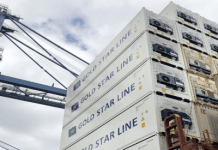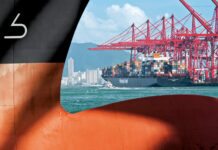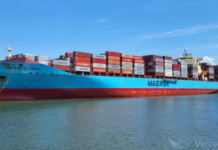
An important factor causing congestion issues in ports around the world is the number of deployed vessels, according to the research and analysis company Sea-Intelligence.
Using data from its Trade Capacity Outlook database, the Danish company has concluded that a change in the number of vessels will be an element that will feed into the congestion issues.
“It is less efficient to handle two 5,000 TEU vessels than it is to handle one 10,000 TEU vessel, once the time to get to and from berth is factored in,” explained Alan Murphy, CEO of Sea-Intelligence.
During the early pandemic period, there was an unusually large decline in the number of deployed vessels as blank sailings rose rapidly, but after this early phase, the number of deployed vessels first increased back to normal and then reached a high point towards the end of peak season 2021.
During the Chinese New Year 2022 (1-15 February 2022), there was a temporary drop, which will be followed by a very sharp upwards correction as we get into the current outlook for March and April 2022, according to Sea-Intelligence analysts.
The figure below shows the change in the number of vessels since the start of 2020, relative to the pre-pandemic period of 2017-2019.

Sea-Intelligence sees that the number of vessels, scheduled to depart Asia and subsequently arrive on the North American West Coast, will increase by 40% compared to the pre-pandemic normality, which will therefore add further pressure on the port infrastructure.
“There is a seasonal dip due to Chinese New Year 2022, but it is the increase in March/April 2022 which should be particularly noticed,” stated Murphy.
What is more alarming, according to Murphy, is that there is a 60% increase in the number of vessels on the Asia-North America East Coast trade lane in the coming months, as carriers try to circumnavigate port congestion on the West Coast.
“This will severely increase pressure on the port infrastructure on the East Coast,” he emphasised.





